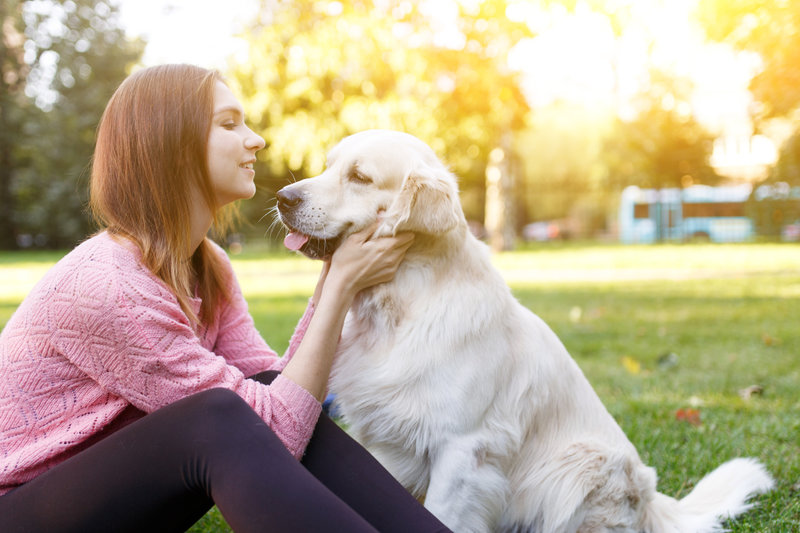CA Contractors #344056

Over 60 million American households are home not just to humans, but also to their canine companions. If yours is among that number, it's likely that your furnishings are influenced, at least to a degree, by your dog.
You might keep the dog's crate in your dining room, or maybe you've put off getting a new couch until your puppy becomes a little less destructive.
We all know that dogs love to run, to feel the sunshine on their fur -- and, given their druthers, to dig endless holes right in the middle of your carefully tended lawn.
So what about your outdoor living spaces? When it comes to the backyard, there are some considerations that dog owners ought to keep in mind. Read on to learn more about dog friendly landscaping, why it's important, and how to achieve it.
Here's how you can ensure that Fido stays safe and that your backyard or other outdoor space remains enjoyable for humans.
Dogs' paws have sensitive pads. When you are choosing landscaping materials, opt for those that are comfortable for dogs to walk on. Pavers made of brick, stone, or concrete ought to work just fine. Steer clear of any material that heats up quickly -- and retains that heat -- lest your puppy's paws get burned.
There are many types of mulch, some more dog friendly than others. Wood mulch, as long as it is untreated, is generally safe for dogs. Cedar mulch is excellent for repelling insects, and won't cause any problems if your dog ingests its shredded fibers.
Rubber mulch, made from recycled tires, is an environmentally friendly option. It looks just like wood, but because it doesn't smell as sweet and delicious to dogs as wood does, is less likely to be chewed on or eaten. Mulch made from coconut fiber is also a good, non-toxic choice.
Of course, you will want to supervise your dog around new mulch, especially if he's in the habit of munching on things he shouldn't.
Cocoa mulch, made from the shells of cocoa beans, contains a chemical called theobromine. This is the same substance that causes chocolate itself to be poisonous to dogs. Mulch made from cocoa beans shells can be dangerous if your dog ingests large amounts of it.
Gardeners and landscapers like cocoa mulch because of its rich dark brown aesthetic, but dog owners should steer clear of it for safety's sake.
In a perfect world, you'd be able to take your dog on long hikes every morning and again in the evening. In the real world, of course, that's not always possible. There are times when you have to let your dog out in the yard when he needs to urinate or defecate.
Unfortunately, this isn't the best practice for your lawn either. Dog urine can cause damage to many types of grass. Over time, it can lead to a discolored yard.
To prevent your dog's business from spoiling the look of your yard, designate one area as a doggy potty area. That will help contain the damage. You can even hide this zone behind shrubs, a decorative wall, or large potted plants.
That way, your dog has a little privacy, while you and your guests can enjoy the lush lawn.
One of the best parts about having a large yard is the opportunity to grow your own vegetables, fruits, flowers, and herbs. However, a digging dog can make short work of a garden.
If your pup wants to "help" when you plant veggies, consider dog friendly landscaping techniques like raised beds instead of a ground-level gardens. Another idea to discourage Spot from trampling your tomatoes? Plant thorny, tall, or fragrant flora such as roses, euphorbia, Joe Pye weed, barberries, or bamboo.
Dogs will usually skirt around these species rather than go through them, so they function as a natural barrier to keep your edible plants safe.
Many dogs have a tendency to "secure the perimeter" by walking or running along the edge of your yard. This is especially true of breeds with a natural tendency to guard your family and property.
It's a good idea to create a pathway that runs alongside your fence or property line as a space that dogs can patrol. Hiding this dog run behind a screen, trellis, or ornamental bushes creates a semi-secret area that dogs seem to enjoy.
You want your canine family members to enjoy the great outdoors as much as you and your family do. Remember that dogs have a tendency to overheat more easily than humans. Make sure there are plenty of comfortable, shady spots where your dog can relax and cool down.
Having fresh, clean water available for your pet is also smart. Use a large, shallow container that coordinates with your backyard living space and keep it filled with fresh water at all times.
It is possible to have an inviting outdoor living area with lush green grass, beautiful flowers, and a prolific vegetable and/or herb garden even if you share your home with canine companions. Keep your pets safe, and your lawn beautiful, by putting these dog friendly landscaping tips into practice.
Does your home require landscaping design, installation, and maintenance? Get in touch today to see what wonders we can work for you -- and your dogs!